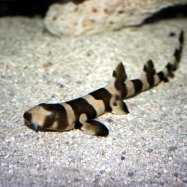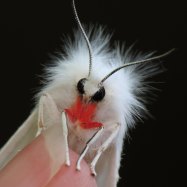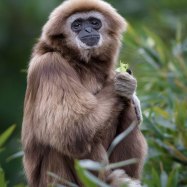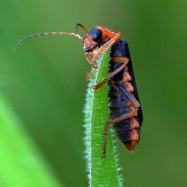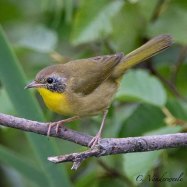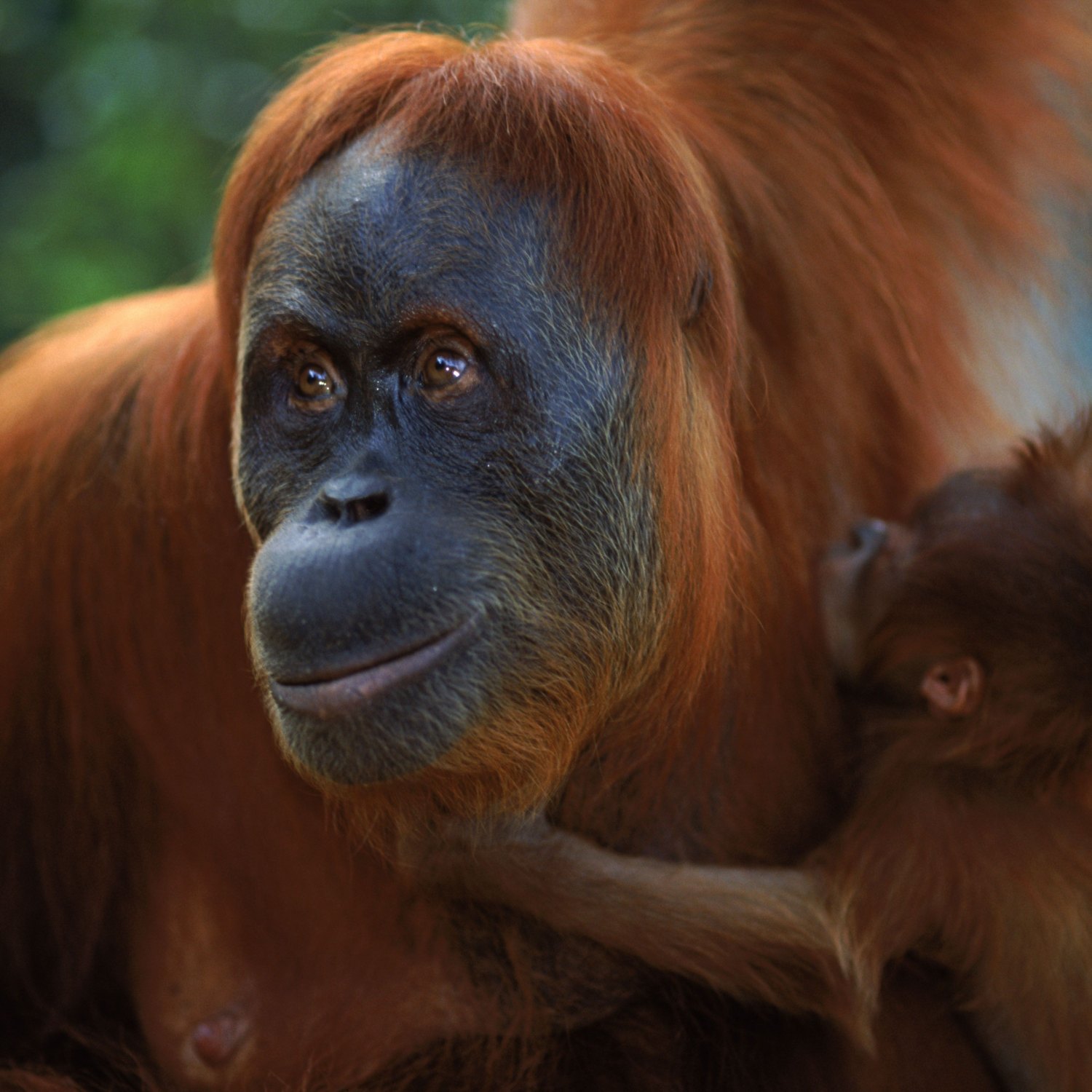
Sumatran Orangutan
1.2 to 1.4 meters
The Sumatran Orangutan is a large and stocky primate found in Southeast Asia. With a body length of 1.2 to 1.4 meters, it is the largest arboreal animal and part of the Hominidae family. Sadly, their population is decreasing due to habitat loss and hunting - let's protect these fascinating animals! #SumatranOrangutan #SaveTheOrangutans #SoutheastAsiaWildlife
Animal Details Summary:
Common Name: Sumatran Orangutan
Kingdom: Animalia
Habitat: Tropical rainforests
The Sumatran Orangutan: A Fascinating Primate of the Rainforests
Hidden deep within the lush greenery of the tropical rainforests of the Indonesian island of Sumatra lies one of the most fascinating creatures of the animal kingdom – the Sumatran orangutan. Scientifically known as Pongo abelii, this primate belongs to the Order Primates, making it a close relative of humans. However, this animal is far from being just a distant cousin. Its unique characteristics and behavior make it stand out as one of the most interesting and endangered species on the planet Sumatran Orangutan.Meet the Sumatran Orangutan
The Sumatran orangutan, commonly known as the Sumatran orangutan, is an arboreal ape with a reddish-brown coat of fur. It belongs to the Kingdom Animalia, Phylum Chordata, and Class Mammalia, making it a part of the same kingdom, phylum, and class as humans. However, unlike humans, it belongs to the family Hominidae, along with other great apes such as chimpanzees and gorillas.This unique animal has a large and stocky body shape, measuring between 1.2 to 1.4 meters in length and weighing between 50 to 90 kilograms. Its powerful arms are around twice the length of its legs, giving it a distinctive appearance and enabling it to swing from tree to tree with ease. These physical features, combined with its striking reddish-brown coloration, make it a truly majestic and awe-inspiring animal to behold.
A Home in the Rainforests
The Sumatran orangutan is endemic to the island of Sumatra, the sixth-largest island in the world, which is located in Southeast Asia Skye Terrier. As its name suggests, this primate calls the dense tropical rainforests of Sumatra its home. These rainforests are rich in biodiversity, with a vast range of plant and animal species co-existing harmoniously.Within these lush green forests, the Sumatran orangutan is a master of its environment. It spends most of its time high up in the trees, where it builds nests to rest and sleep in. These nests are made from flexible branches and leaves, providing a comfortable and safe spot for the animals to rest in between their daily activities.
Feast on Fruits
Being a frugivorous animal, the Sumatran orangutan's diet mainly consists of fruits. These primates have a strong sense of smell, which they use to find ripe and delicious fruits from the forest canopy. However, their diet is not limited to just fruits. They also forage for other edible items such as leaves, shoots, and even small insects. This diverse diet ensures that their nutritional needs are met and their bodies stay healthy and strong.The Sumatran orangutan's diet plays an essential role in the rainforest's ecosystem as well. As they travel through the canopy, these primates disperse seeds and help with pollination, creating a balanced and sustainable ecosystem.
Geographical Distribution and Endangerment
The Sumatran orangutan is native to Indonesia, with the vast majority of its population found on the island of Sumatra. These primates are also found in smaller numbers on the nearby island of Borneo. However, their numbers are rapidly declining, and they are currently classified as Critically Endangered on the IUCN Red List.The main reason for their population decline is habitat destruction, primarily caused by deforestation for industries such as logging and palm oil production. This, coupled with illegal hunting and poaching, has caused a significant decrease in their numbers over the years. It is estimated that there are only 14,600 Sumatran orangutans left in the wild, making conservation efforts crucial for their survival.
Conservation Efforts
Efforts are being made to protect the Sumatran orangutan and its habitat. Government and non-government organizations, along with local communities, are working together to raise awareness and implement conservation programs. These programs focus on educating people about the importance of the Sumatran orangutan and its ecological role, as well as finding sustainable solutions to protect their habitat.One such initiative is the establishment of protected areas, where the orangutans can roam freely and safely without the threat of deforestation and hunting. The Bukit Tigapuluh National Park in Sumatra is an excellent example of such an area, where the orangutan's populations have been successfully recovering.
Why We Need to Protect the Sumatran Orangutan
The Sumatran orangutan is not just another animal on the brink of extinction. It is a crucial part of the rainforest's delicate ecosystem, and its survival is crucial to maintaining a healthy and balanced environment. Furthermore, this extraordinary animal is closely related to humans, sharing over 97% of our DNA. This fact alone should be enough to remind us of our responsibility to protect our fellow primates.By preserving the Sumatran orangutan, not only are we saving a unique and fascinating species, but we are also securing the survival of an entire ecosystem that benefits us all.
In Conclusion
The Sumatran orangutan is a remarkable animal that continues to captivate and fascinate us with its unique appearance, behavior, and role in the rainforest. As we continue to explore and understand the depths of the animal kingdom, the Sumatran orangutan remains a reminder of the importance of conservation and coexistence with our fellow creatures. By working together to protect this endangered species, we can ensure its survival for future generations to enjoy and appreciate.

Sumatran Orangutan
Animal Details Sumatran Orangutan - Scientific Name: Pongo abelii
- Category: Animals S
- Scientific Name: Pongo abelii
- Common Name: Sumatran Orangutan
- Kingdom: Animalia
- Phylum: Chordata
- Class: Mammalia
- Order: Primates
- Family: Hominidae
- Habitat: Tropical rainforests
- Feeding Method: Frugivorous
- Geographical Distribution: Island of Sumatra, Indonesia
- Country of Origin: Indonesia
- Location: Southeast Asia
- Animal Coloration: Reddish-brown
- Body Shape: Large and stocky
- Length: 1.2 to 1.4 meters
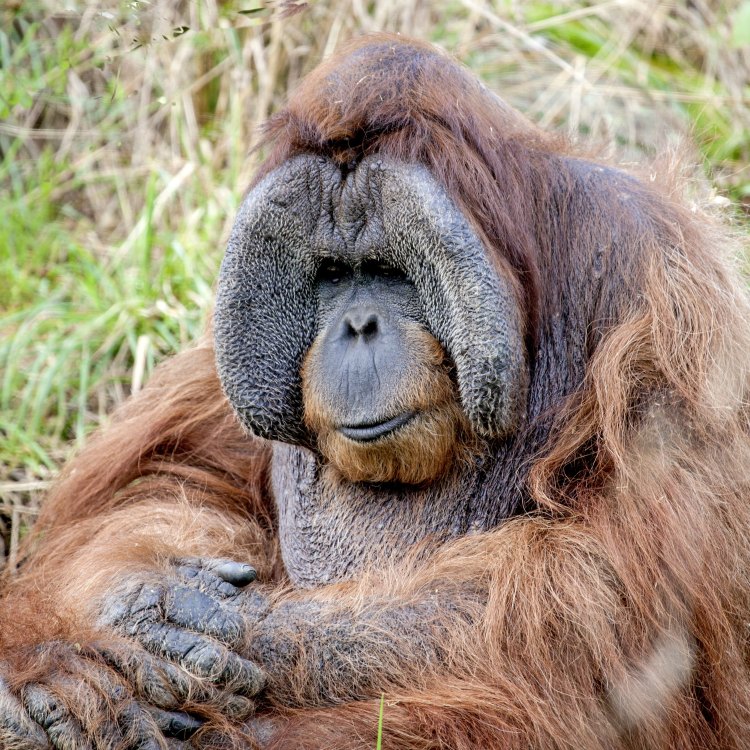
Sumatran Orangutan
- Adult Size: Up to 90 kg
- Average Lifespan: 30 to 45 years
- Reproduction: Sexual
- Reproductive Behavior: Polygynous
- Sound or Call: Long calls and vocalizations
- Migration Pattern: Non-migratory
- Social Groups: Solitary or small groups
- Behavior: Arboreal and diurnal
- Threats: Habitat loss, poaching, illegal pet trade
- Conservation Status: Critically Endangered
- Impact on Ecosystem: Seed dispersers, engineers of the forest
- Human Use: Tourism attraction, research subjects
- Distinctive Features: Large cheek pads, long arms
- Interesting Facts: The Sumatran Orangutan is one of the closest living relatives to humans.
- Predator: Humans, tigers

Pongo abelii
The Sumatran Orangutan: A Critically Endangered Species and Our Closest Living Relative
The rainforests of Sumatra, an island in Indonesia, are home to a magnificent creature that has captured the hearts and minds of people all around the world - the Sumatran Orangutan. These large, gentle primates with their distinctive features and unique behaviors have fascinated scientists and researchers for decades. But their future hangs in the balance as they face numerous threats in their natural habitat. In this article, we will delve into the world of Sumatran Orangutans, their behaviors, the challenges they face, and their significance in our ecosystem and society PeaceOfAnimals.Com.Adult Size and Average Lifespan
The Sumatran Orangutan is the smallest of the three species of orangutans, commonly found in the islands of Borneo and Sumatra. Though they are smaller, these incredible creatures can weigh up to 90 kg and reach heights of up to 1.5 meters. They are sexually dimorphic, with males being significantly larger than females and having large cheek pads that give them a unique appearance.
In the wild, Sumatran Orangutans have an average lifespan of 30 to 45 years. However, in captivity, they can live up to 60 years, making them one of the longest-lived primates on the planet.
Reproduction and Reproductive Behavior
Like most primates, Sumatran Orangutans are sexual beings. They reach sexual maturity at around 10 to 15 years of age and have a gestation period of about 9 months. Unlike other primates, the females have a longer inter-birth interval, with only one offspring born every 7 to 8 years Skink Lizard.
Sumatran Orangutans are also known for their polygynous reproductive behavior, with one male mating with multiple females. The dominant male forms a harem, with up to 8 females, who he guards fiercely from other males. This behavior has allowed Sumatran Orangutans to have successful breeding rates despite their low population numbers.
Sound or Call, Migration Pattern, and Social Groups
One of the most distinct features of the Sumatran Orangutan is their long calls and vocalizations. These calls serve as a form of communication between individuals and are especially crucial during the mating season.
Sumatran Orangutans are also known for their non-migratory behavior, meaning they do not move to different locations seasonally. Instead, they are arboreal animals, spending most of their lives in the trees, and only come down to the forest floor occasionally. They are also diurnal, meaning they are active during the day and rest at night.
While their specific social groups can vary, Sumatran Orangutans are commonly solitary creatures, with the exception of a female and her offspring. However, there have been reports of small groups of males forming bachelor communities to travel and forage together.
Behavior and Threats
Sumatran Orangutans are primarily arboreal, meaning their daily activities, including feeding, resting, and moving, take place in the trees. They are also known for their intelligence and problem-solving abilities, using tools and building nests for shelter.
Sadly, these incredible creatures are facing numerous threats in their natural habitat, leading to their critically endangered status. Habitat loss, primarily due to palm oil plantations, is one of the most significant threats to Sumatran Orangutans. This loss of habitat also results in human-wildlife conflict, with orangutans often labeled as pests and killed.
Poaching and the illegal pet trade are also major threats, with baby orangutans being taken from their mothers and sold as pets or performers. These threats, along with the slow reproductive rate and low population numbers, have put Sumatran Orangutans at great risk of extinction.
Conservation Status and Impact on Ecosystem
In 2021, the International Union for Conservation of Nature (IUCN) classified the Sumatran Orangutan as a critically endangered species. It is estimated that there are only about 14,600 individuals left in the wild, with their population declining rapidly.
The loss of Sumatran Orangutans would have a significant impact on their ecosystem. They are known as "engineers of the forest" as they play a crucial role in seed dispersal and tree growth. By moving through the canopy and consuming fruits, orangutans help to spread seeds to different areas, aiding in the survival and growth of various plant species. This, in turn, helps to maintain a balanced and healthy ecosystem.
Human Use and Distinctive Features
Sumatran Orangutans have been used in the tourism industry as a major attraction, bringing in much-needed revenue to local communities. However, the increase in ecotourism also brings with it the threat of disturbance and disease transmission to these already vulnerable creatures.
Their distinctive features, including their long arms and large cheek pads, have made them a source of fascination and admiration for humans. Sadly, these features also make them targets for the illegal pet trade, as they are seen as valuable status symbols.
Interesting Facts and Predators
Sumatran Orangutans are not just fascinating creatures, but they also have some interesting facts that make them even more unique. As mentioned earlier, they are one of the closest living relatives to humans, sharing 97% of their DNA with us. This close genetic relationship has allowed scientists to study them and learn more about the evolution of humans.
Despite their large size, Sumatran Orangutans have very few natural predators in their habitat. The main threats to their survival come from humans, such as poaching and habitat destruction. However, tigers have been known to occasionally prey on young or sick orangutans.
In Conclusion
The Sumatran Orangutan, with its distinctive features, unique behaviors, and close genetic relationship to humans, holds a special place in our hearts and minds. However, their numbers are rapidly declining, and they are now classified as critically endangered. It is up to us to take action and protect these amazing creatures from extinction. By supporting conservation efforts and sustainable practices, we can help to ensure a future where Sumatran Orangutans can continue to thrive in their natural home - the rainforests of Sumatra.
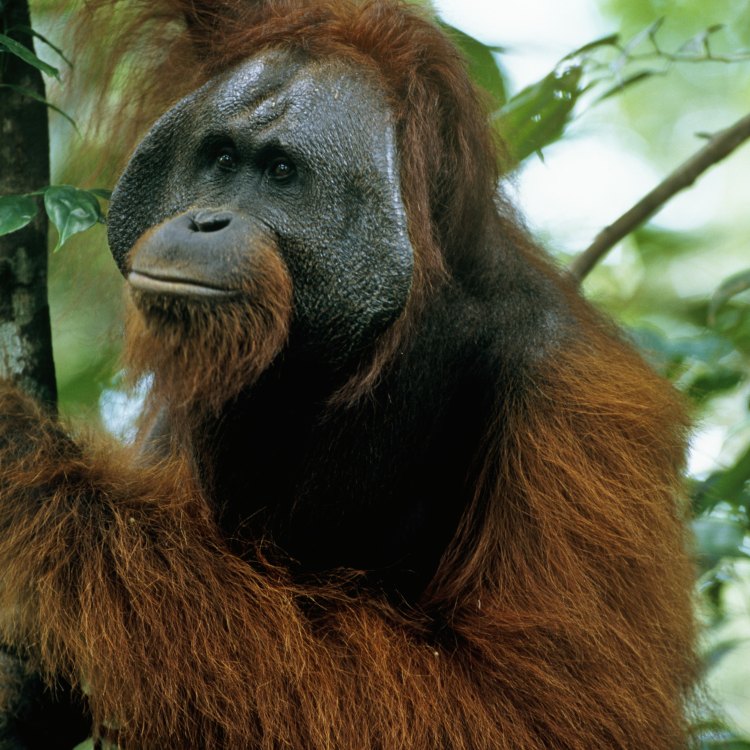
The Sumatran Orangutan: A Fascinating Primate of the Rainforests
Disclaimer: The content provided is for informational purposes only. We cannot guarantee the accuracy of the information on this page 100%. All information provided here may change without prior notice.

